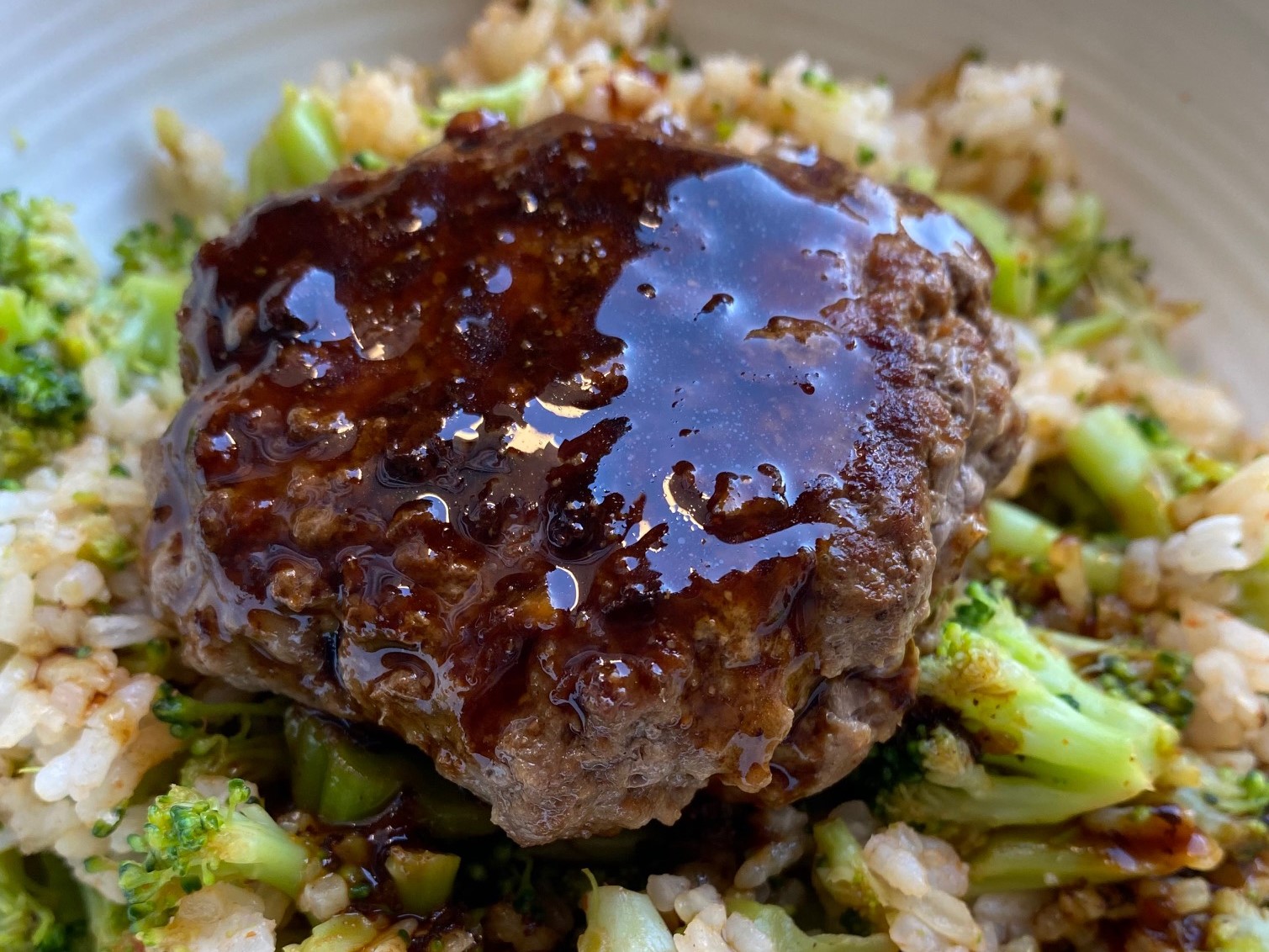

These delicious ginger teriyaki burgers take less than 30 minutes to prepare – 200 calories per burger including teriyaki sauce, with 24g protein. Fast and flavorful.
Eating to improve athletic performance, shed fat, or build strength doesn’t mean boring food. Let’s work together to fuel your goals. Contact me.
This recipe was designed as a simple and tasty dinner taking under 30 minutes from start to finish! This dish pairs great with jasmine rice, or a combo of rice and chopped broccoli.
Protein Choices for the Ginger Teriyaki Burgers

For the meat, 93/7 lean beef or turkey both work great – go with whatever you have available. They’re cooked on the stovetop versus baking or grilling to save time. The key to maximize burger flavor and texture is to not squish the meat too much when forming the burgers, and cook them at the start and finish on high heat to lock in moisture and bring out some caramelized flavors to the surface. The pan should look something like this when the burgers are complete.
Tofu is an excellent alternative. To prepare, remove water from regular (or frozen and then thawed) extra firm tofu and cut into cubes. Sprinkle the outside with garlic powder, ginger powder, and a bit of black pepper. Brown the sides of the cubes in a non-stick pan with a small amount of oil. Then, pour the teriyaki sauce into the pan and heat until the tofu has absorbed some of the sauce.
Teriyaki Sauce
The sauce recipe is very flexible depending on sweet/tangy preference. Rice vinegar provides the tang and pancake syrup provides the sweetness. This recipe lean more to the tangy side.
The first step in preparation is the most critical – heat the garlic, ginger, and scallion in sesame oil until it sizzles BEFORE adding any of the other liquid ingredients. This helps extract flavorful oil-soluble compounds.

If you need to avoid soy, the low-sodium soy sauce can be substituted with coconut aminos.
The purpose of the arrowroot powder/flour is to add thickness to the sauce. I selected this thickener because it does not impart opacity. Corn starch will also do the trick, but your sauce will be a bit cloudy.
No-sugar pancake syrup is used provide sweetness without adding calories. Personally, I don’t care for the taste of these products stand-alone as a pancake syrup, but found them handy in cooking and baking. The one I selected uses sucralose; there are multiple brands on the market that use other sweeteners, such as monkfruit. It’s likely you’ll need to adjust the quantity considering all of the products have different sweetening power. In the quantity shown in the recipe, the salty soy and tangy rice vinegar negate the maple flavor to ensure that your teriyaki doesn’t taste like pancakes. 😉 Brown sugar or honey also work in this recipe if you prefer not to use artificial sweeteners (adds calories from carbohydrates).
If you have extra teriyaki or want to make a bigger batch, store in an airtight jar in the fridge for up to a few weeks.
These ginger teriyaki burgers take less than 30 minutes to prepare – 200 calories per burger including teriyaki sauce, with 24g protein. Fast and flavorful.Disclosure: I am an Amazon Associate and earn from qualifying purchases. This helps keep the website ad-free.


